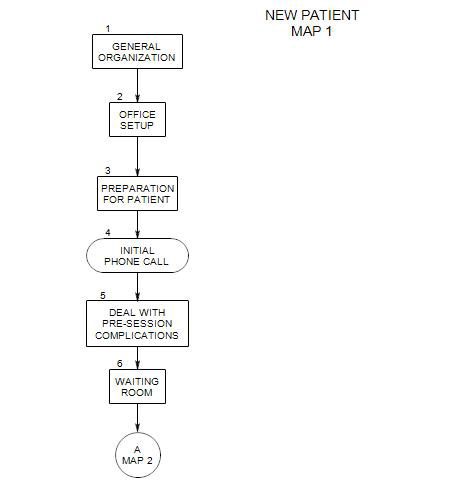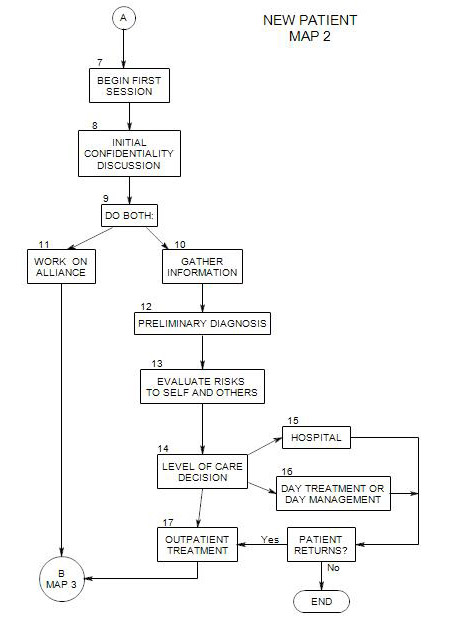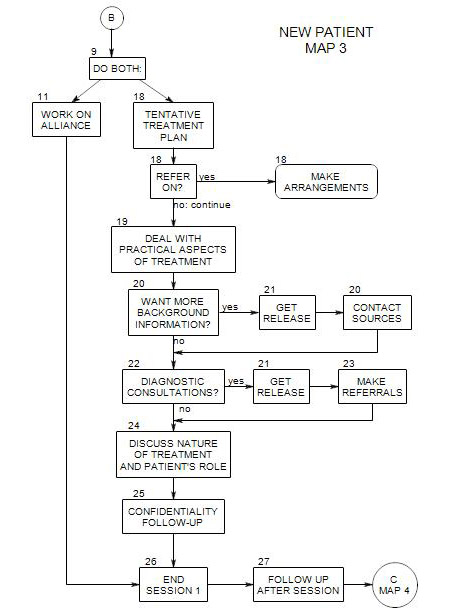30. WHAT LEVEL DO YOU WORK AT?
-
Follows Section 28 on Map 4
Perhaps level is a loaded term. I just couldn’t think of another. In any case, there are at least two aspects to this choice: [1] the depth question, which has to do with the extent to which you work with material the patient is already consciously aware of as opposed to unconscious processes and content; and [2] the breadth of focus issue.
30a. The Depth Issue
Four general approaches come to mind:
- Work with behavior only. Here the assumptions would seem usually to be that a very focused, behavioral approach is likely to be effective and sufficient for the patient’s purposes.
- Work cognitively, assuming that the issue is how the person thinks or feels, rather than being a product of habits or other behaviors. Assume also that unconscious dynamics are either relatively unimportant for the issues of interest, or that they will be influenced by changes in conscious thought patterns.
- Work psychodynamically, with emphasis on uncovering unconscious thoughts, motives, defenses, etc. Here, you are assuming that more focused or purely conscious approach will miss the unconscious forces that drive the troublesome thoughts, behavior, etc., and that more fundamental or wider ranging techniques are necessary.
- Work analytically, with primary focus on unconscious processes
Combination approaches are also possible:
- You may begin by working behaviorally, then move to cognitive or psychodynamic approaches if the initial techniques are ineffective.
- You can begin cognitively, and bring in behavioral techniques or a psychodynamic approach as needed. The use of behavioral techniques in the context of primarily cognitive treatment is relatively common.
- You can begin psychodynamically, work cognitively or behaviorally when to do so would be more efficient or practical. [cf.: Wachtel]
30b. The Breadth Issue
Here again, you have choices
- With a narrow focus, you deal with a single issue of symptom, and stop when it’s resolved. This approach can be helpful when the person really has one issue, or when treatment time is limited by time or financial constraints; or when the person only wants to deal with one issue or fears interminable treatment.
- You may choose a narrow serial focus, in which you work on one issue at a time, and decide as each one is handled whether to move on to another. This gives a little more flexibility, but leaves termination a possibility at any time.
- With an intermediate focus, you deal with the original symptoms and complaints, extend your work to include related symptoms and issues.
- With a broad focus, you look at whatever comes up. Often the rationale here is that patients don’t know what’s really the issue and can’t specify it at the outset of treatment; or that one issue is connected to another; or that you can’t get at basic change if you limit your focus.



